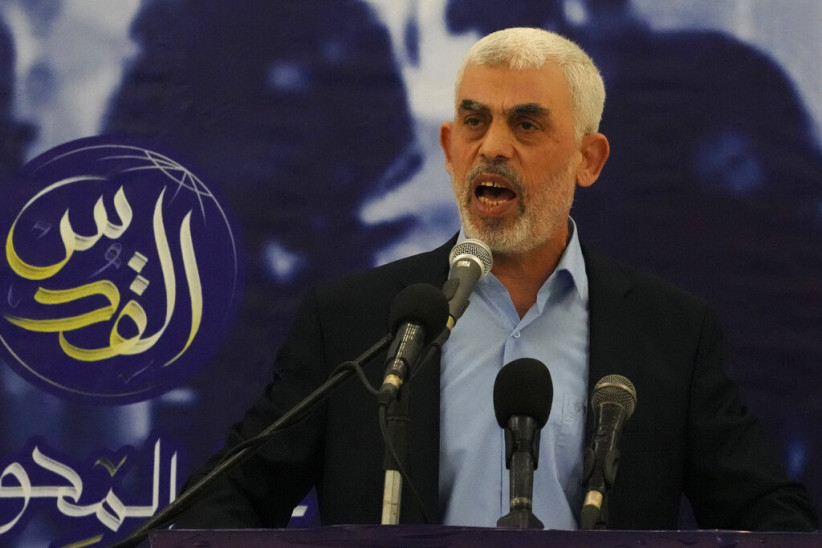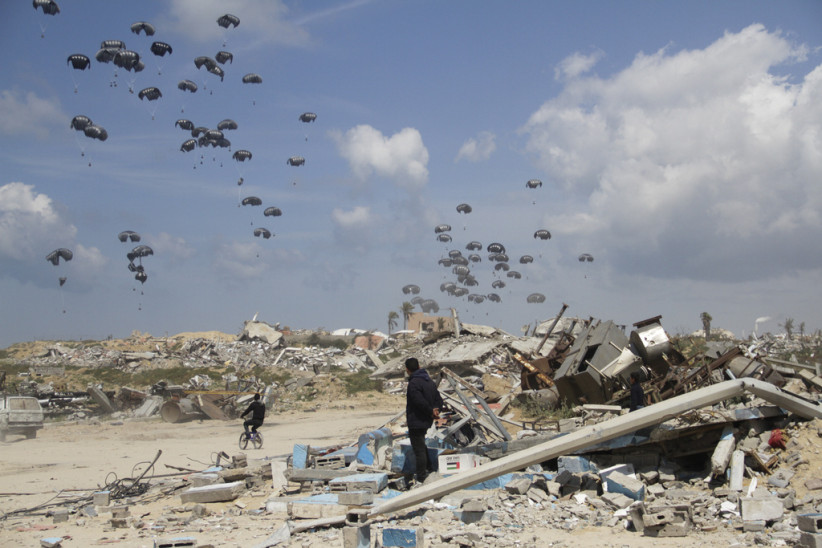The crucial meeting, to be attended by Qatar, Egypt and the US, is centered on a ceasefire and hostage exchange agreement
Mediators are making a last-ditch effort to revive ceasefire talks between Hamas and Israel amid tensions in the Middle East and an Iranian attack on Israel looming.
The crucial meeting, which is taking place today in Doha and will be attended by Qatar, Egypt and the US, is focused on talks on a ceasefire and hostage exchange agreement. The draft agreement was proposed by US President Joe Biden, but unresolved differences still cloud the future landscape.
Israel is sending a delegation to the talks, which are expected to include CIA Director Bill Burns, Mossad chief David Barnea, Qatari Prime Minister Sheikh Mohammed bin Jassim Al Thani and Egyptian intelligence chief Abbas Kamel, he told CNN. diplomatic source.
Hamas, however, has said it will not participate in the talks but is willing to talk to mediators afterward if there are “developments or a serious response from Israel,” the source told CNN.
“Our position was clear… we will not go for new rounds of negotiations. We will only move forward to implement what has been agreed upon,” Hamas politburo member Bassem Naim told CNN on Tuesday.
Below is a summary of what we know about the status of the talks so far.
What is Biden’s proposal?
In May, Biden presented a three-phase proposal. The proposal would combine the release of hostages from Gaza with a “complete and irreversible ceasefire” and the release of Palestinian prisoners from Israel.
OR first phase will last six weeks and will include the “withdrawal of Israeli forces from all residential areas of Gaza” and the “release of a number of hostages, including women, elderly, wounded in exchange for the release of hundreds of Palestinian prisoners” and the implementation of a temporary ceasefire.
OR second phase it would include a “prisoner exchange with a view to the release of all remaining living hostages, including male soldiers” and a permanent end to the fighting.
In third phasewill begin a “major reconstruction plan for Gaza and any final remains of hostages who have been killed will be returned to their families,” the US president said.
It is unclear how many of the original hostages to be freed are still alive.
Hamas and Israel have been engaged in grueling negotiations for months. Officials from Qatar and Egypt act as intermediaries, delivering messages to representatives of Israel and Hamas in shuttle diplomacy, since representatives of the warring parties are not present in the same location. Technical teams have flown in and out of Doha and Cairo to iron out the details of a potential deal.
Where does the Biden proposal get stuck?
Despite the initial positive reaction from Hamas and Israel, both sides failed to agree on some final details of the proposal’s implementation, such as what the sequence of the hostage-prisoner exchange would be, how many Palestinians would be freed and how much back should Israeli forces withdraw from Gaza.
Netanyahu has been accused of undermining the deal as far-right members of his ruling coalition threaten to topple the government despite pressure from the US and the families of the hostages.
Last month, the prime minister reversed a key Israeli concession in the cease-fire negotiations, demanding that militants be barred from returning to northern Gaza during a possible cease-fire, an Israeli source familiar with the talks told CNN. Israel had previously agreed to allow Palestinians unrestricted access to northern Gaza.
Netanyahu’s office on Tuesday rejected claims that the prime minister had changed his position, saying his latest stance “does not introduce additional conditions and certainly does not contradict or undermine” the May proposal. Instead, Netanyahu’s office accused Hamas of adding unrealistic demands to its position.
The prime minister’s office also discussed three contentious issues in the negotiations, including the movement of gunmen from southern Gaza to the north, the number of live hostages to be released and Israel’s ability to approve Palestinian prisoners to be released or whether to be sent into exile.
A senior US administration official, speaking to reporters this week, said “most of the work” on the deal had been done, but it was unlikely to be signed at Thursday’s meeting, as both sides still had unwavering positions on ” four or five issues’.
A regional diplomat familiar with the negotiations told CNN that the remaining obstacles for Hamas are Israel’s restrictions on the movement of people from southern Gaza to the north. In particular, Israel is asking for the right to veto which Palestinian prisoners are released, as well as to maintain a presence in the Philadelphia Corridor and the Rafah border crossing with Egypt.
The diplomat spoke on condition of anonymity because of the sensitivity of the matter.
What is Hamas’s position in Thursday’s talks?
U.S. officials had said the talks had reached an advanced stage until Hamas political leader Ismail Haniyeh was killed in Tehran in late July, an assassination Iran blamed on Israel. Israel has not confirmed or denied responsibility, but Iran has vowed revenge.
There were concerns that the killing would halt negotiations between Israel and Hamas. Hamas replaced Haniya with Yahya Shinwar, the group’s hardline leader in Gaza, who is one of Israel’s most wanted men. While Haniya, who was a relative moderate, lived in Qatar and was susceptible to pressure from his host country, Sinwar is believed to be in a deep underground tunnel in Gaza and difficult to reach.
Hamas did not rule out a deal with Israel, but said it would not participate in further negotiations. Instead, he asked negotiators to formulate a plan to implement the cease-fire proposal put forward by Biden.
The senior Biden administration official who spoke to reporters last week said a deal is on the table and that “implementation details remain to be worked out.”
A Hamas source told CNN on Wednesday that the group has adopted a position of “deliberate ambiguity” about whether it will attend the cease-fire talks, adding that its position on a possible cease-fire is firm regardless of whether it participates or not in conversations.
Asked why it is unclear whether Hamas will attend the ceasefire talks, the source said: “This ambiguity is the position of the movement, which was announced in its last statement, is deliberate and did not come by accident. It comes as a result of Netanyahu’s behavior.”
Why are Thursday’s talks so important?
Thursday’s ceasefire talks are the result of a major diplomatic effort by mediators Qatar, Egypt and the US to push for a last-ditch effort to end the war and free the hostages as Iran prepares to attack Israel.
The urgency of the talks was highlighted by the three negotiators, who issued a rare joint statement last week calling on the warring parties to return to negotiations and offering what they called a “final bridge proposal” to overcome remaining obstacles. The details of this proposal have not been made public.
At the same time, US and Middle Eastern diplomats have mobilized to prevent Iran from launching an attack on Israel that could lead to an all-out war. Both Iran and the US have said the lines of communication between them are open.
There have been some indications that Iran may abandon plans to attack Israel if a ceasefire agreement is reached. However, the country’s mission to the United Nations said on Saturday that Tehran’s retaliation was “completely unrelated to the ceasefire in Gaza”.
As of Tuesday afternoon, U.S. officials did not believe Iran had decided to retaliate against Israel, according to two U.S. administration officials. Diplomatic efforts are ongoing to try to prevent a full-scale attack and de-escalate the volatile situation, one of those officials said.
Source :Skai
With a wealth of experience honed over 4+ years in journalism, I bring a seasoned voice to the world of news. Currently, I work as a freelance writer and editor, always seeking new opportunities to tell compelling stories in the field of world news.












